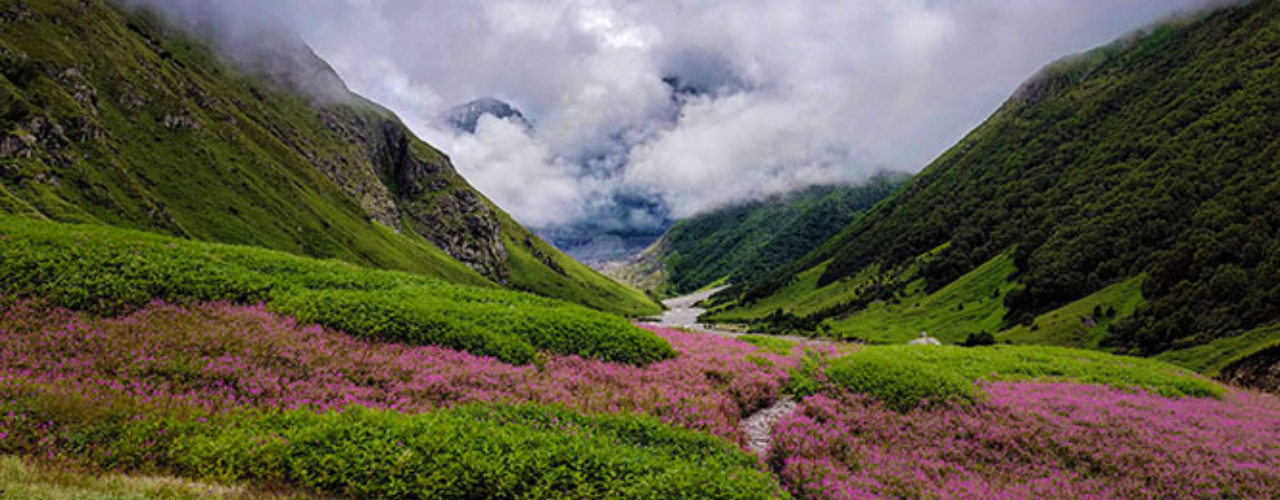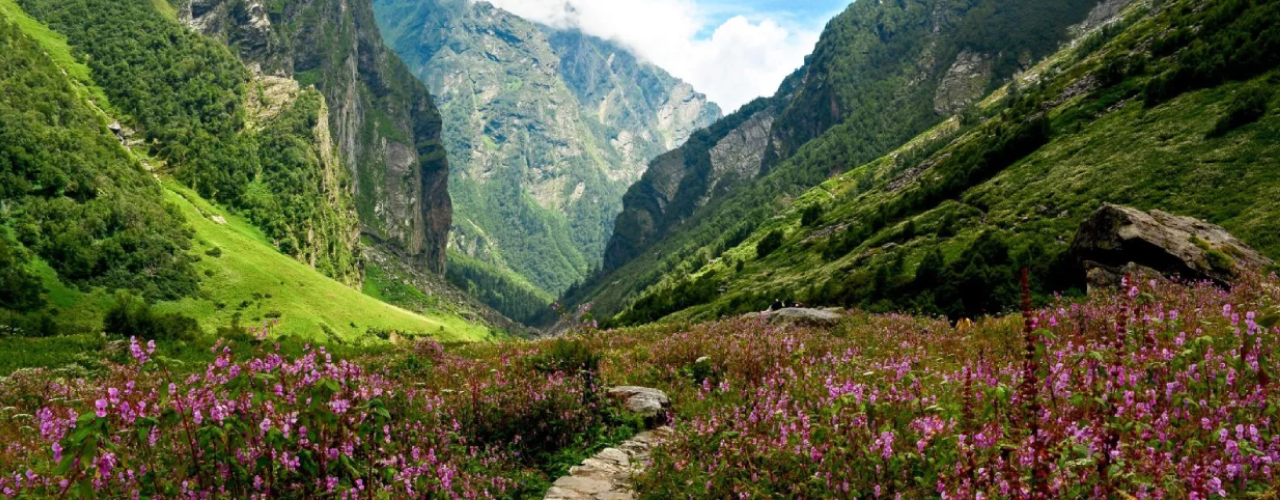
What Makes the Valley of Flowers Trek So Special?
What Makes the Valley of Flowers Trek So Special? A Complete Guide to Nature, Mythology & Travel Tips
Introduction: A Journey That Begins With Awe
Have you ever passed through a place where each step was an utterance poetic in nature? Where wildflowers might sway with the blowing wind, and somehow, the mountains might whisper their ancient lore? That place does exist — it is the Valley of Flowers! Lying concealed in the Garhwal Himalayas of Uttarakhand, this hidden gem is far beyond just a trek. It is a complete spiritual experience. Just after the onset of the monsoons, the lovely valley gets transformed into a multicolored canvas of Himalayan plants, almost all of which are rare. But it is not that beauty alone that infuses the apotheosis into Valley of Flowers Trek; that magic is the confluence of nature, mythology, and tranquility.
Where Is the Valley of Flowers and Why Is It So Famous?
The Valley of Flowers National Park lies in the Nanda Devi Biosphere Reserve, and is a UNESCO World Heritage Site. Situated in the Chamoli district, it opens its doors to visitors from June all the way through approximately October. Territory is known for its vibrant meadows blemished by strange and rare flora and fauna, not just being a botanist’s paradise but also a place of spiritual elevation for the traveler. The valley was rediscovered by British mountaineer Frank Smythe in 1931, and it has since matured to become one of the most iconic treks all across India.
Why the Valley of Flowers Trek is Truly Unique
Among Himalayan treks, the Valley of Flowers Trek has that soft gradient and unreal rewards in stock. Unlike rugged treks such as Rupin Pass or Buran Ghati, this one welcomes even beginner trekkers, making it a complete difference. With a gentle climb to about 14,100 ft at Hemkund Sahib, acclimatization does become easier. Following that hairsplitting beauty is that in July-August, the valley explodes with colors from over 500 species of wildflowers. It feels like nature is unto a grand celebration.
Myth & Spiritual Significance: The Valley Touched by Gods
According to legends, the Pandavas were supposed to have rested in this valley while on the journey toward heaven. It is believed Hanuman flew through this valley in search of Sanjeevani to save Lakshman. The very presence of Hemkund Sahib, the famous Sikh holy shrine at an elevation of 14,000 feet, adds to the divinity of the trek. Many trekkers do both the Valley of Flowers and Hemkund Sahib as a spiritual circuit. This rich spiritual connection adds a deeper analysis to an already enchanting landscape.
Flora & Fauna in Full Bloom
Come monsoon, and this valley becomes a living botanical museum. Rare Himalayan flowers like Blue Poppy, Cobra Lily, Brahma Kamal, and Himalayan Bell grow freely here. You might also spot musk deer, blue sheep, or even a Himalayan black bear. This vibrant mix of wildlife and floral life is what earned the valley its UNESCO tag.
Best Time to Visit Valley of Flowers Trek
- Mid-July to Mid-August: Peak bloom, best for flower lovers
- Late June to Early July: Snow patches + beginning of bloom
- September: Fewer flowers, but clearer skies and golden hues
- For the most magical experience, plan your trek between July 10 and August 15.
How to Reach Valley of Flowers – Route Guide
- Start at Haridwar/Rishikesh
- Drive to Govindghat (via Joshimath)
- Trek to Ghangaria (10 km)
- Day trip to Valley of Flowers (4 km one way)
- Optional trek to Hemkund Sahib
- Make sure to book your permits online or get them from the forest check post at Ghangaria.
Travel Tips & What to Carry
- Waterproof backpack + raincover
- Good trekking shoes with grip
- Poncho or rain jacket
- Woolen layers (especially for Hemkund Sahib)
- Basic medicines (especially for AMS and knee support)
- Energy bars & reusable water bottle
- For a detailed list, read our blog: Valley of Flowers National Park in Uttarakhand Trek
Eco-Friendly Trekking Tips
- Carry your waste back to Ghangaria
- Avoid plastic bottles and single-use items
- Don’t pluck flowers or disturb the wildlife
- Stay on marked trails to protect fragile ecosystems
- Leave no trace, only footprints and blessings.
Conclusion: Why You Shouldn’t Miss This in 2025
With every step on this trail, you feel a little more connected — to nature, to silence, and perhaps to something divine. The Valley of Flowers Trek is not just a destination; it’s a reminder that such untouched beauty still exists in the world. As you walk through those colorful meadows, you don’t just see flowers — you see life blooming in its purest form.
So this 2025, don’t just go on a trek. Go find a part of yourself in the Valley of Flowers.

